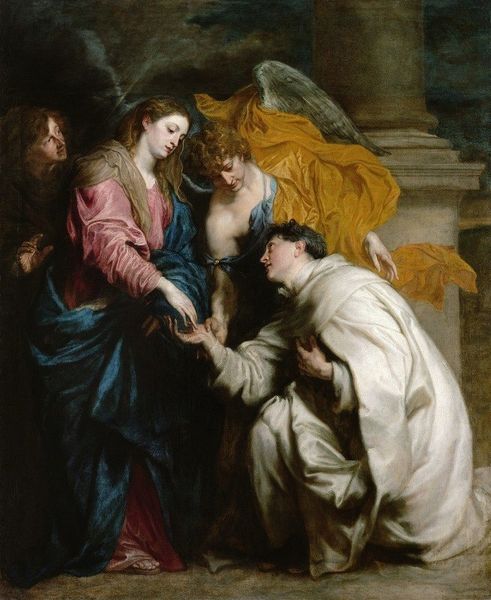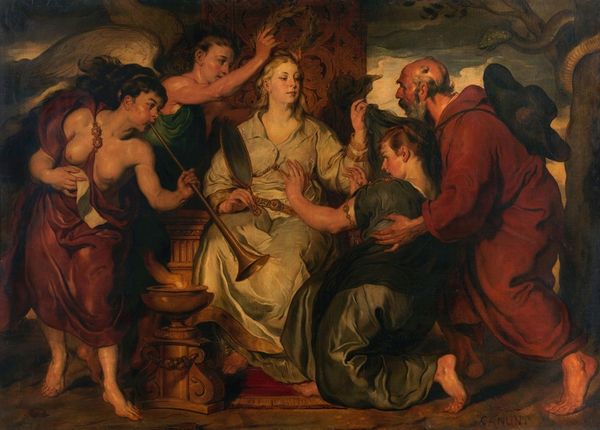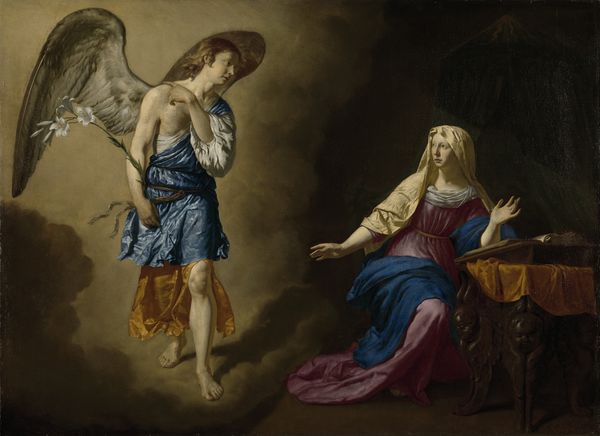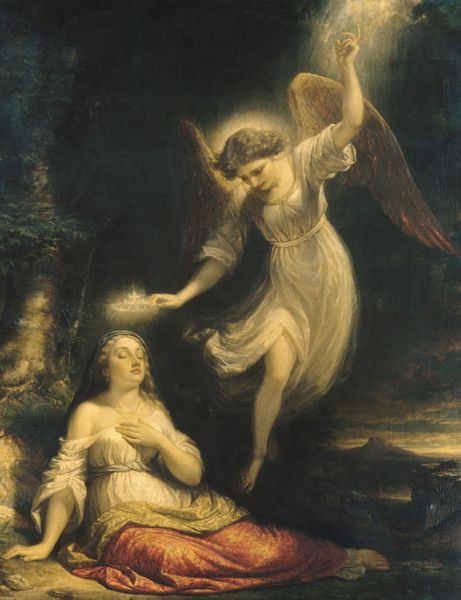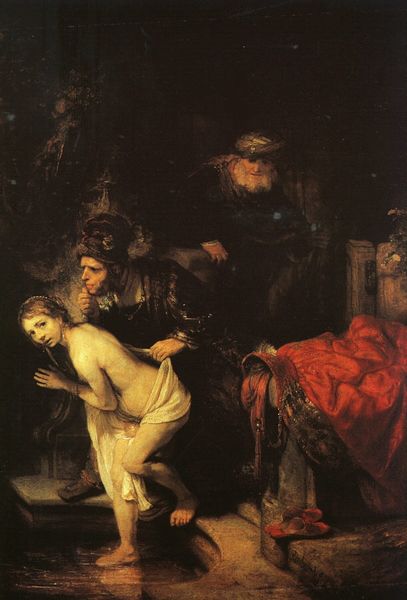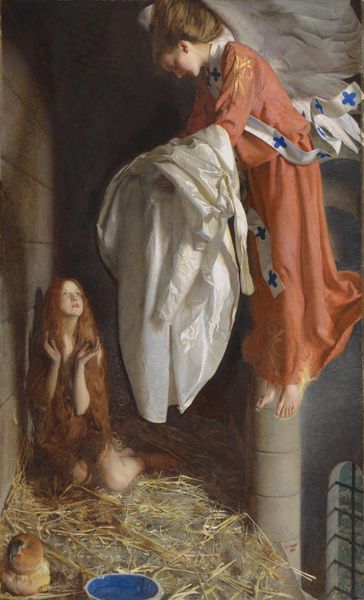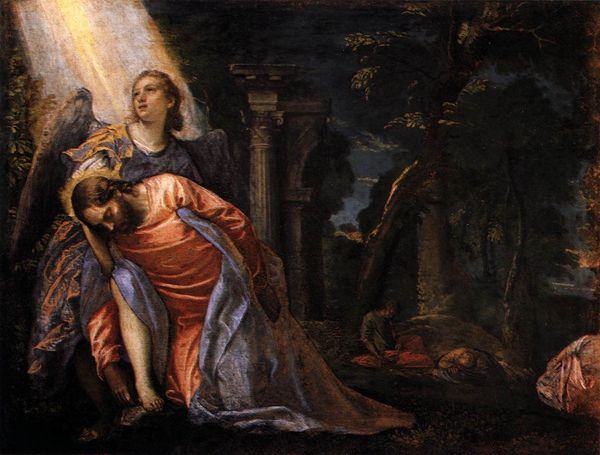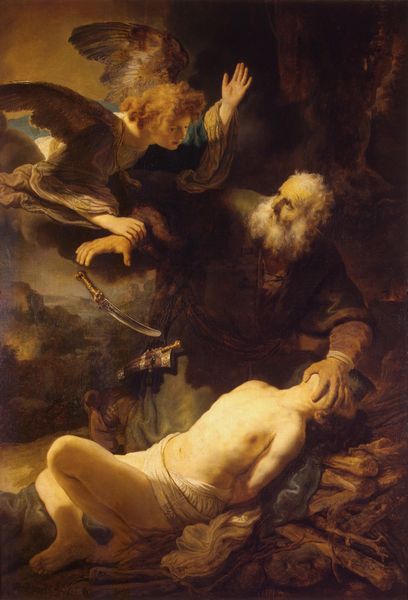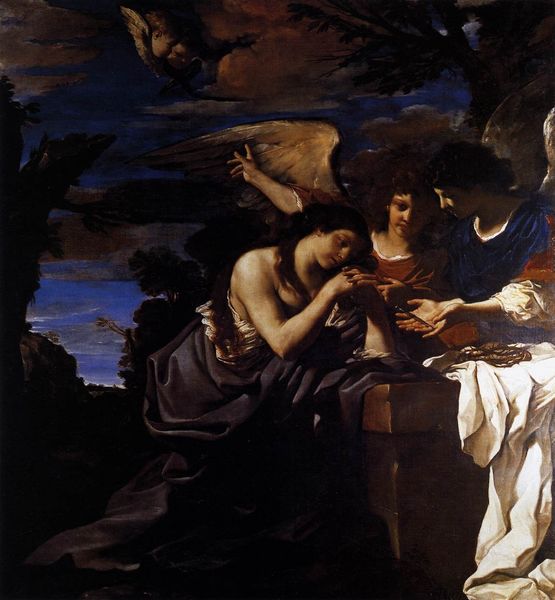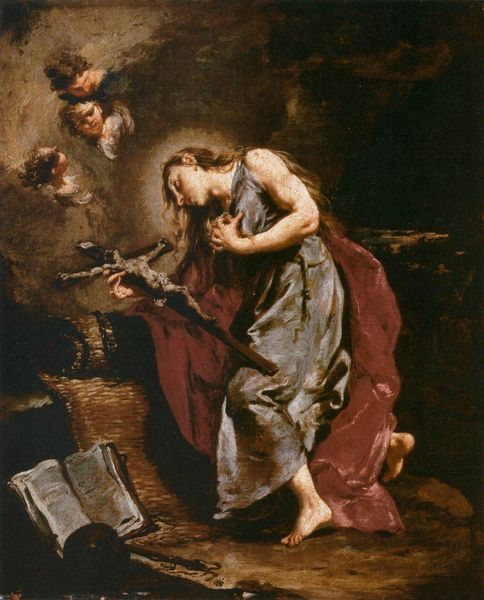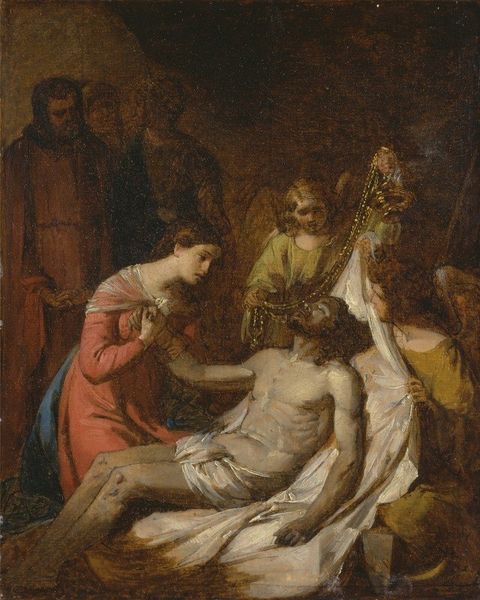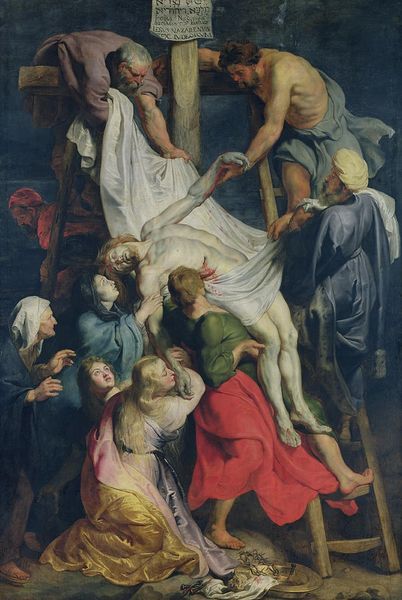
#
narrative-art
#
baroque
#
figuration
#
oil painting
#
history-painting
#
italian-renaissance
Copyright: Public Domain: Artvee
Editor: This is Caravaggio's "The Annunciation," painted around 1608 to 1610, an oil on canvas depicting a pivotal scene. The darkness, offset by these pockets of light, evokes a really dramatic mood. The angel's pose seems so unnatural, like it's captured mid-motion. What catches your eye? How do you interpret this work? Curator: Indeed. Note how the composition adheres to a descending diagonal, with the angel poised above and Mary kneeling below. The strong tenebrism – the stark contrast between light and shadow – not only heightens the drama but also guides our eye. Consider the materiality, the viscosity of the oil paint. Does its texture contribute to the emotional impact? Editor: It definitely emphasizes the realism. The folds in Mary's dress and the angel's robes have such depth. But the angel almost appears to be falling. Is this deliberate? Curator: Observe that the dynamic instability introduces a sense of the ethereal, quite divorced from traditional Renaissance Annunciations. Further note how the use of impasto, thick application of paint, gives the figures a sculptural quality, highlighting the tangible reality of this divine encounter. The lilies also introduce contrast, they punctuate the overall chromatic register. The very composition asks viewers, "what do these color decisions represent?" Editor: So, it’s about creating both the divine and the physical reality of the scene using these painterly techniques? It subverts expectations of heavenly perfection with earthly rawness? Curator: Precisely. It disrupts our notions, forcing re-evaluation. Editor: Thanks, I understand much better how technique can shape meaning here. Curator: And it's the structural decisions which impact narrative perception.
Comments
No comments
Be the first to comment and join the conversation on the ultimate creative platform.
